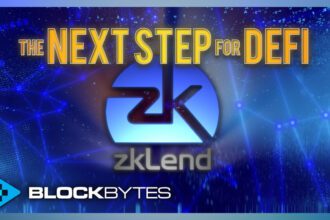As I write this, Twitter is lighting up with news about “Roosh being liquidated” and the “fallout that this will have on the Fantom chain”. What’s interesting to me is that it seems like many other blockchains and even stocks like Netflix, which is down nearly 75% from its high in November, are all in dire straits. Yet everyone has a different story for each chain. How can a multitude of different stories all give rise to the same behavior? Why should we expect Alt-coins to always correlate with ETH and BTC behavior? Finally, how can chaos theory and physics answer the question at hand, “How is a blockchain, very much like a pile of salt?”
Chaos Theory
Chaos theory is a field combining math and physics to talk about the organization of chaotic systems, covering some topics such as the infamous butterfly effect. In 1987, the idea of “Self Organized Criticality”1 was proposed to explain “1/f noise” also known as “pink” noise (instead of “white” noise). 1/f describes the frequency relationship to the strength of noise in the system. For example, we see a very large number of low magnitude earthquakes all over the world, but we see strong earthquakes at a rate that decreases with how strong they are. Very rarely do we see “very large” earthquakes. This tendency is also seen in avalanches, the brightness of stars, and even as diverse as brain cell circuits in animals.
An example often used to explain this is the salt pile. Imagine we have a flat table, and above the center we pour salt from a source. The very first salt pieces are uninteresting as they just land on the table. However shortly we get a pile with a slope. This happens because as the salt lands on top of other pieces, it forms unstable piles that fall over. In doing so, they can cause other pieces that had been ‘stable enough’ to become unstable and fall over. This chain-reaction cascade is our ‘noise event’. We’re interested in knowing, as we pour the salt, how often can we expect topple events at different scales?
Intuitively we already know that as we pour this salt pile, we will see the side sweeping avalanches, but most of the time it will be these little series of cascades that affect very small regions. Furthermore the slope of our pile never changes its incline on average. While avalanches will cause fluctuations, on average, because all these piles of salt ‘rest’ in a ‘barely stable’ state, the slope is always constant. If it were higher, we’d expect an avalanche to roll through and level it out, once level, we expect far fewer avalanche events.
Chaotic Markets
It seems to me the world of financial markets is very much a similar system. Various investors, like pieces of salt, fall into a landscape, and ‘rest’ themselves among areas they think of as ‘stable’, or ‘unstable but promising’. Unlike salt, people can talk to each other. People can use twitter to share information. This changes the landscape as investors choose to keep placing their pieces of salt. However, just because we keep pouring pieces of salt, doesn’t mean we should expect our neighborhood to always grow.
We expect market corrections and cataclysmic “black-swan” events. We expect them because they regularly happen infrequently. As this avalanche of financial correction cascades through crypto, we start noticing major shifts around us, and ask ourselves “is this the cause?”. If we imagine a landslide, we know that when regions begin to give, they do so in islands. For a brief period of time, a section of land falls down together, before it falls apart. As various investors become liquidated, and various speculations fall out, we look to these islands as stories to explain what is happening. In 2008, the stock market crash, which was finally based on a sub-prime mortgage crisis, was initially blamed on NYC’s Chinatown community.
Moving forward there are two things to keep in mind here. Some stories can be useful to help us contextualize our times. But they can also be blinding. Focusing too much on the dollar value of a blockchain is very much like trying to ask “how high am I on the salt pile?”. While there are some avalanches that can drop you very much very fast, if you trust the technology, the pile never stops growing.
To get in contact with Roshee check out the Learn Discord or hit him up on Twitter @ajquhzx.
1 Bak, P.; Tang, C.; Wiesenfeld, K. (1987). \”Self-organized criticality: an explanation of 1/f noise\”. Physical Review Letters. 59 (4): 381–384.














